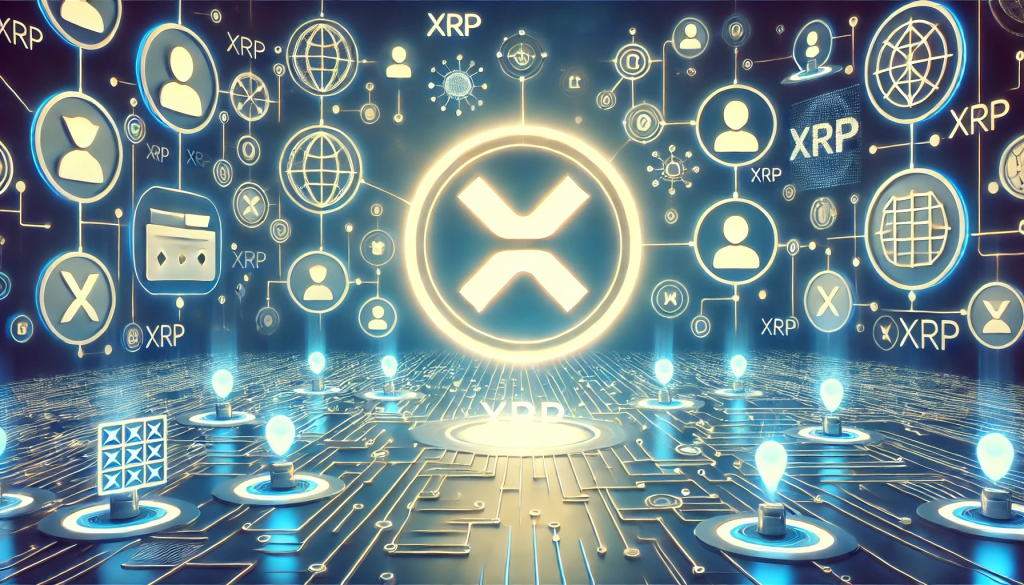The XRP Ledger (XRPL) launches Decentralized Identifiers (DIDs), unlocking secure, self-sovereign digital IDs in blockchain. Known as XLS-40, the upgrade aligns with W3C standards, allowing users more control and privacy in digital interactions on XRPL.
Decentralized IDs Mark New Era for XRPL
On October 30, 2024, the Decentralized Identifier (DID) amendment was activated, marking a new era for user-controlled digital identities and a critical milestone for the XRP Ledger (XRPL).
To further protect users' privacy and the integrity of their XRPL transactions, the latest update, XLS-40, lets them build cryptographically verifiable, decentralized identities.
Users are able to control and manage their digital identities independently of any one entity thanks to DIDs, which are distinct, decentralized identifiers. Because of this structure's conformance to W3C standards, DIDs are durable, globally resolvable, and compatible with different blockchain networks.
XLS-40: A Foundation for Self-Sovereign Identity
The code for the DID standard on XRPL was co-developed by Mayukha Vadari. These identities provide a unique and verified identification, much like a digital fingerprint.
It is common practice to correlate cryptographic keys, verification mechanisms, and service endpoints with each DID in a DID document. The usage of verifiable credentials (VCs), which enable authentication while preserving user data privacy, is made possible by this paper. A two-way relationship between the DID and the document on the blockchain ensures authenticity and prevents forgery by allowing the two entities to mutually verify one other.
Verifiable Credentials: Completing the Identity Solution
In the context of the XRPL ecosystem, DIDs are not the whole identification answer. In order to ensure that user identities are thoroughly validated, verifiable credentials (VCs) are crucial. Virtual certificates (VCs) enable users to securely exchange proof of identity without compromising personal data. They are tamper-evident and cryptographically secure credentials issued by trusted companies.
Because they allow secure identity verification when combined with DIDs, VCs, as pointed out by Vadari in a Twitter debate, could play a significant role in addressing issues like avoiding election fraud.
Applications for VCs on XRPL: From DeFi to AML
Many different applications can be made possible by VCs on XRPL. These include secure digital transactions, access to decentralized finance (DeFi) applications, and compliance with Know Your Customer (KYC) and Anti-Money Laundering (AML) regulations. The XRPL's goal is to provide a user-controlled, decentralized alternative to existing identification solutions by merging DIDs and VCs.
At the same time, Ripple CTO David Schwartz responded to XRP community members' concerns about the network's dependence on XRP. Because it protects the XRPL from spam attacks, XRP is still crucial to its security, according to Schwartz.
XRP’s Role in XRPL Security: Insights from Ripple CTO
He went on to say that bad actors can't flood the network with transactions because XRP is required as a transaction fee.
According to Schwartz, "Unless rules change, nothing can move on XRPL without XRP." He said, "For a public ledger to resist spam attacks, you need something scarce to fund transactions."
Amid the continuous evolution of Ripple's stablecoin, Ripple USD (RLUSD), this message reassures XRP holders regarding the token's long-term utility. Anxieties over RLUSD's potential impact on XRP demand for international payments was a priori voiced by XRP advocates. Nevertheless, it has been made clear by Schwartz and Ripple executives that the stablecoin is meant to augment, rather than supplant, XRP in the XRPL ecosystem.
Future Implications of DIDs on the XRPL Ecosystem
The ecosystem is anticipated to reap numerous benefits from the debut of DIDs on XRPL. With the proliferation of blockchain-based services and apps, the importance of decentralized identifiers as a safe, user-controlled method for managing digital identities is growing.
Online transactions, digital document signing, and DeFi application identity verification should be made easier on XRPL with DIDs. A larger trend in the industry is placing an emphasis on user control over personal data and privacy, which is in line with this growth.
XRPL’s Competitive Edge in Web3 Identity Management
Web3 is increasingly prioritizing decentralized identity management, and XRPL's integration of DIDs positions it as a competitive platform for identity solutions in this space. Users interested in privacy-focused, self-sovereign identity solutions may become increasingly active on XRPL as the DID standard is adopted by more applications.



























Comment 0